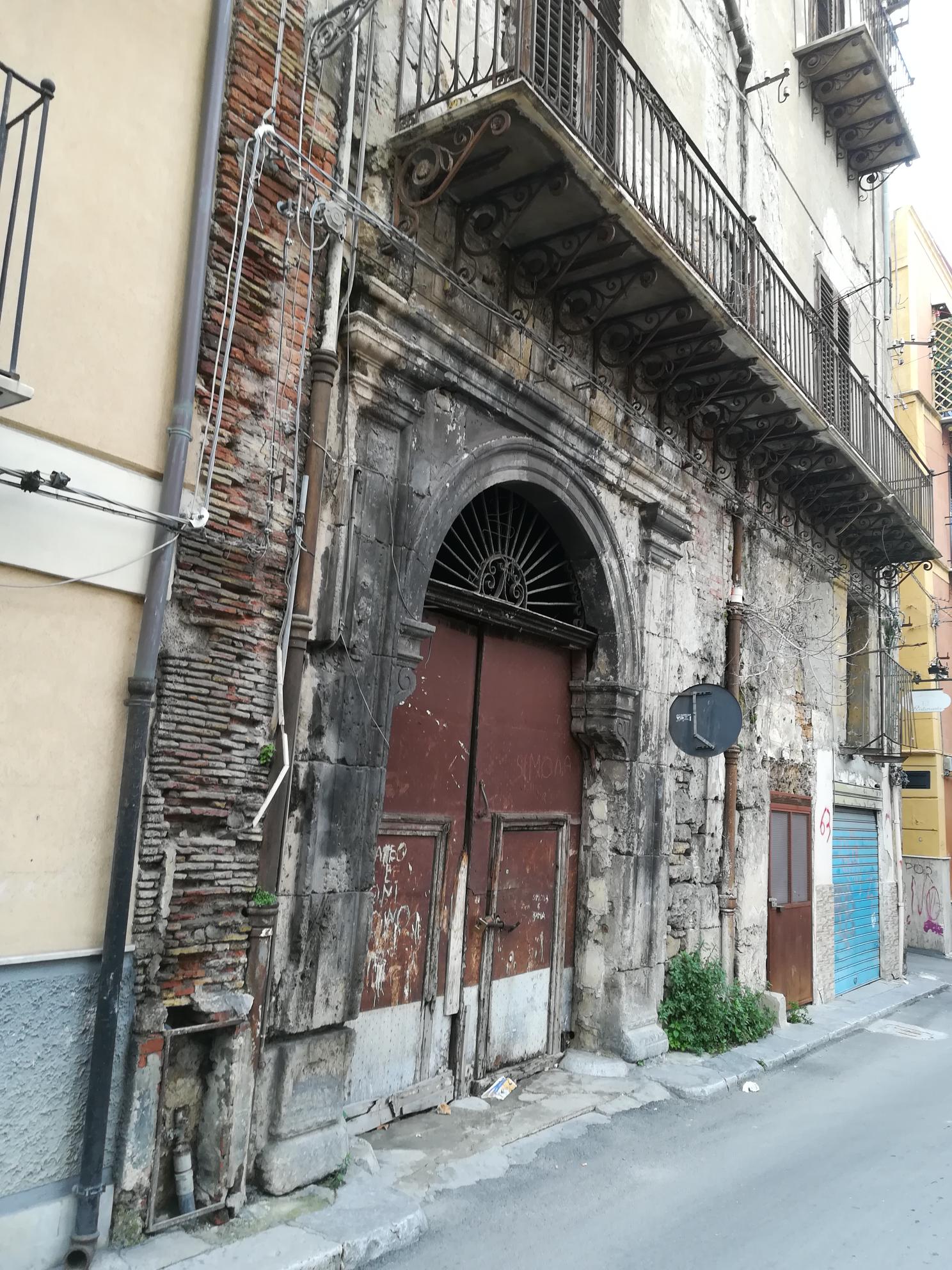
Read Italiano version
Palazzo Fiore
This building with a very interesting façade, which is still awaiting restoration, and which could reveal even more interesting things from a historical point of view, was built by the nobleman from Palermo Marco Fiore.
In the manuscript Palermo restored 1615-1620 we read: The road of the Germans begins from the Madonna dell’Itria and there are many beautiful houses made anew there. Going down there is a corner where there starts Marco Fiores building, which shows all its sumptuosness.
The palace was most likely built at the same time as the road (1620) at the time of the Praetor Ribadeneria, based on a design by Mariano Smiriglio. The street on which the palace overlooks was named after the viceroy Francesco De Lemos, Count of Castro. It was built by bridging various sizes and differences in height as the river Kemonia flowed underneath. In the lower parts of the building, several stone blocks were found, perhaps belonging to a defensive system placed to guard the bridge that from Porta Busuemi, nearby, led to the neighborhood where the inhabitants of Centorbi and Capizzi housed (Albergheria).
The Fiore family was very rich in the seventeenth century and a Giulio in the mid-eighteenth century owned a remarkable collection of apothecary jars. Many majolica jars date back to the sixteenth century and the subjects in the medallions were almost all of a religious nature.
In the collection there were also vases with figures of armed warriors in an attitude of rest with rural scenes in the background.
A splendid Sant’Agata from the workshop of the master Lazzaro: the Saint stands out against a cloudy sky and a mountain view can be seen in the background.
The beauty of the floors, the friezes, the angels, the statues of the central wall, the marble curtains, the grates for the enclosure, the symbols placed in the corners complete the richness of the Church. The Concezione del Capo is worth a visit to Palermo for its wonderful ensemble.
